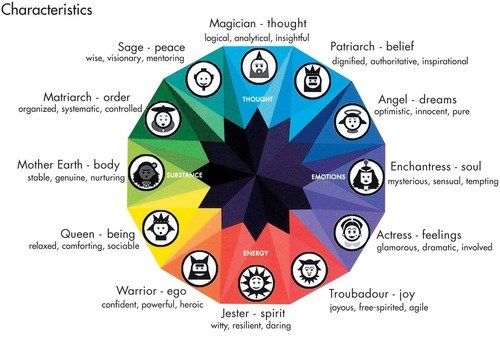
Academics teach the concept of segmentation based on consumer personality traits, lifestyles, and motivations, yet marketers are less likely to use so-called psychographics to create target markets (or consumer personas) in a meaningful way. In today’s discussion, we’ll talk about: how marketers segment markets based on consumer personality, including lifestyles, motivations, and values how marketers discover distinct consumer personality traits how marketers use consumer personality to construct brand messages Segmentation based on consumer personality First, let’s discuss consumer personality and related aspects of lifestyle and values. Personality is enduring and stable patterns of behavior, attitudes, emotions, that vary between individuals Brands have personalities, too, but today we’ll confine our conversation to consumer personality. The concept of consumer personality comes from psychology, which might explain some of the reluctance to use it for marketing purposes. Yet, the potential for using consumer personality to laser focus marketing appeals to particular groups is vast. So, why, you ask, don’t marketers use personality as a segmentation variable? Part of the reason, maybe most of the explanation is that marketers are unaware of academic research on consumer personality. In teaching marketing, we spend so much time trying to teach the concepts and definition, we fail to show the impact of personality on marketing performance . I hope to change this in today’s discussion. Rather than argue the merits of Freudian versus other constructions of personality, like the ones above, I’ll talk about the implications of personality on marketing. Discover personality traits Part of the reason marketers don’t use personality to create distinct messaging to customer segments is the difficulty in collecting such data. In the past, discovering personality required long surveys that were both time-consuming and expensive. Today, with the plethora of social media posts, consumers revel their personality unintentionally in every post they write, like, or share. The introductory image shows the personality of particular Facebook user who participated in a study. Information about this user’s personality allow you to craft messages that resonate with the user. This image show how that user personality rates across the so-called “Big 5” elements of personality — openness, extraversion, agreeableness, neuroticism, and conscientiousness. You’ll likely get similar reports using Google Analytics in the near future as social networks strive to maintain their value to advertisers. In the meantime, new AI (artificial intelligence) products promise to scrub your social networks to collect data, then use text analytics to determine the personality (or any other trait) of users. Here’s a great article I wrote about determining user personality on Facebook. In addition to using text analytics to determine consumer personality, posts reflect surrogates to personality such as types of movies or media they enjoy. For instance “Outlaws” are likely fans of Scarface or similar genres while “Regular Guys/ Gals” are more likely to watch movies where the little guy excels. Using personality information in marketing While some argue that personality has little impact on purchase behavior, others disagree, and I’m one of them. I think the failure to find the link is due to errors in measuring or implementing. Thus, I strongly encourage marketers to consider personality in crafting marketing campaigns. Keep in mind that personality research generates a probability about how consumers respond. Other factors such as mood and external factors such as ability to buy moderate the relationship so you never predict how a particular person will respond, but how a group is likely to respond. Let’s take on the archetypes above for example — say the “Outlaw” archetype because it’s very common on social networks. The “Outlaw” is motivated to destroy what isn’t working and they like to disrupt and shock others. Products that are edgy, maybe a little dangerous, and seem a little outside accepted norms appeal to them. Contrast that with the “Regular Guy/Gal” and you see a distinctly different marketing strategy relying on safety, conformity, and doing what everyone else is doing. Beyond these archetypes, we can look at other personality traits such as self-control where there’s a difference between whether consumers prefer potion-controlled packaging (low self-control) versus larger, less expensive mass packaging. The key to marketing to personality types is to create a fit between the personality and the brand — including not only messaging, but brand attributes and packaging. A caveat Situations impact how we evaluate ourselves and modify our personality somewhat. When we’re confident, we tend to be more extroverted, when we’re at work, we tend to view ourselves as more conscientious. Thus, your marketing should fit the situation. If you’re advertising message appears on a business site, such as on the subway or on a business site like LinkedIn, you should focus on the more salient aspects of conscientiousness and focus on archetypes such as Matriarch, Warrior or Sage that are more likely activated by the situation. Conversely, if you’re advertising message appears on a social site like Instagram or in the entertainment district, you might favor extraversion and archetypes such as Jester, Magician, and Troubadour. Need marketing help? We welcome the opportunity to show you how we can make your marketing SIZZLE with our data-driven, results-oriented marketing strategies . Sign up for our FREE newsletter, get the 1st chapter of our book on digital marketing analytics – FREE, or contact us for more information on hiring us. Hausman and Associates, the publisher of MKT Maven, is a full service marketing agency operating at the intersection of marketing and digital media. Check out our full range of services.

Leave a Reply